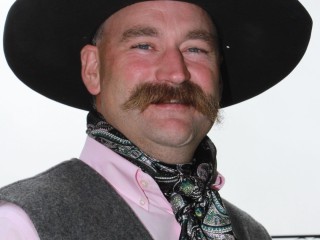 US beef industry commentator and identity Trent Loos visited Australia for a series of speaking engagements earlier this month, including the Beefworks feedlot conference in Toowoomba and a social networking seminar in Queensland’s South Burnett district. Below is a summary of his observations about the Australian grainfed industry published last week in the High Plains Ag Journal, based out of Dodge City, Kansas.
US beef industry commentator and identity Trent Loos visited Australia for a series of speaking engagements earlier this month, including the Beefworks feedlot conference in Toowoomba and a social networking seminar in Queensland’s South Burnett district. Below is a summary of his observations about the Australian grainfed industry published last week in the High Plains Ag Journal, based out of Dodge City, Kansas.
It was not really my intention to make this a mini-series but last week I shared my view as to what will lay the groundwork for the future of American agriculture. Then I flew off to Queensland, Australia, and found that much of what I proposed last week was already in place here in the Land Down Under.
I have been on a tremendous cattle feedlot tour here in the eastern half of Australia and have seen more Wagyu cattle on feed than I have ever seen in my life. The cattle feeding industry here is not at all different on the surface except for a couple of key components. Although the feedlot structure, the feed handling and the pen sizes are much the same as it is at home, one glaring difference is the lack of corn in the feed bins.
First, I need to tell you that our tour guide for the week has been Matt George of Bovine Dynamics, who is the consulting nutritionist for the lots we have visited. Therefore, our knowledge of what is really going on nutritionally could not be any more current. Today, the majority of Australian cattle are grass fed but the growth in the grain feeding industry has been substantial.
The grain mixture is wheat, milo (sorghum) and barley. The cattle are brought in the lot at a variety of weights but if they are commodity cattle for a conventional market, typically heavily Brahman influenced, they will be on feed for 100 days. The growth area here happens to be Angus-based cattle fitting in a higher quality program and those cattle could be fed anywhere from 120 to 200 days.
The real eye-opener, however, is the Wagyu cattle that are fed between 350 and 500 days. I want to say you have not seen cattle feeding at its finest until you see a pen of 2,000-pound steers that have been eating feed for 450 days.
Australia does not have a quality grading system like we do but they have scores based on a marbling index on these Wagyu fed cattle that is modelled after the Japanese Intramuscular Fat index. On this scale, USDA Prime quality grade would be a 4 and the range goes up from there to 12. As a side note, the Wagyu beef we saw on restaurant menus was typically a 6 marbling score. Needless to say the value of these cattle is pretty unbelievable as we saw some steers valued at $5000 per head.
So all of this makes we wonder if we have become too dependent on corn to feed cattle. Corn has been a tremendous feed source that was readily available and, until recently, very affordable. So the answer would be yes we have become dependent upon on corn and maybe we now have a window in which to seek other avenues of feeding cattle. However, one can never forget and even the Australians will openly tell you that the American beef is the best beef in the world and that is because it is corn fed.
So while we have factions within our nation's beef supply seeking niche opportunities to produce and sell something other than corn-fed beef, the truth of the matter is that our true niche is the demand for our corn-fed beef globally. With that said, I do believe there are things to be learned in the quest to take our beef production to the next level.
The other thing that really jumped out at me here in Australia is that four of the first five feedlots we visited had their own brand in the market place and were marketing directly to the global consumer. It may be the toughest task yet but I truly believe that in the next era the food producer will need to be more product driven in order to capture more of the consumer's food dollar.
Horizontal coordination within the food chain will address the need for greater returns on our investments, which are required in today's agricultural business world. The most important aspect may well be a greater line of communication all throughout the food chain with factual, source-based information about who and how food is produced in harmony with nature. It's those people to people relationships that will build our bridge to the future.
- Editor's note: Trent Loos is a sixth generation US farmer, host of the daily radio show, Loos Tales, and founder of Faces of Agriculture, a non-profit organization putting the human element back into the production of food. Get more information at www.FacesOfAg.com
RELATED ARTICLE: Rancher with a cause, Trent Loos advocates agvocacy
